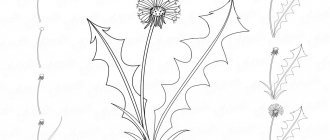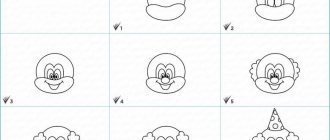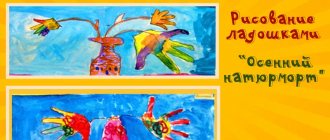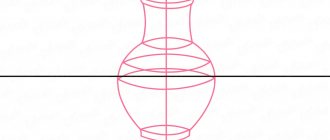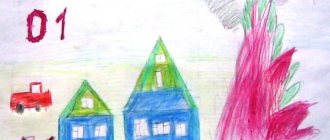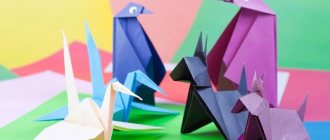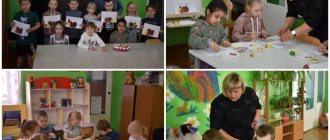Summary of a drawing lesson in the senior group on the topic “Still life with vegetables”
Polyak Yana Nikolaevna
Summary of a drawing lesson in the senior group on the topic “Still life with vegetables”
Goal: to create conditions for strengthening children’s ability to convey the shape, color, and characteristic features of vegetables .
- continue to introduce children to the fine arts - introduce them to still life and its features;
- consolidate the ability to determine the shape and color of objects;
- activate children's vocabulary;
- consolidate the ability to use wax crayons.
- develop interest, the ability to admire the content and beauty of paintings;
- cultivate aesthetic feelings, the desire to complete the work started.
Examination of paintings by various artists, clarifying knowledge about drawing .
Materials and equipment: Reproduction of a painting depicting
still life , dummies of 3-4 vegetables , fabric, album sheets, simple pencils, wax crayons.
How to draw a still life with fruit in gouache step by step for beginners
Master class on drawing for preschoolers “Still lifes with vegetables and fruits” Olga Stanislavovna Sredina, teacher, Central Children’s Educational Institution No. 1 “Bear Cub”, Yuryuzan, Chelyabinsk region.
Goal: - creation of educational work Objectives: - teach techniques for working with gouache without preliminary drawing - improve compositional skills - develop the ability to work with a brush (draw parallel lines, draw a “mesh” pattern) - cultivate a sense of harmony - introduce genres of painting - consolidate knowledge of vegetables and fruits - introduce the concept of glare Materials: Album (two sheets), gouache, soft brushes No. 8, 5, 3, 1 Preliminary work: - familiarization with still lifes (from the Internet) Paintings with vegetables Paintings with fruits Games (before or after class) : 1. Find a still life (among postcards with portraits and landscapes) 2. Find funny and sad still lifes (among magazine illustrations in A3 format) 3. Make a still life (the first option is puzzles, the second is overhead parts) A3 format. 4. Divide the cards into two piles (vegetables and fruits) Quote: Highlight is an element of chiaroscuro. This is a spot of light on a brightly lit surface. Occurs due to the reflection of a light source (sun, light bulb) on an object. Blick - (German: Blick look, fleeting shine). 1) an ingot of silver, cleared of lead. 2) the most illuminated point in the picture. Work progress: VEGETABLES Open the album (two pages). On the right page we draw the table plane in dark green or emerald color.
Draw the silhouette of a plate (bowl) in blue and paint over it. The silhouette looks like a boat.
We draw red tomatoes in a bunch of several pieces.
We place oval light green cucumbers along the edges. Place the potato (or turnip) on the table. Draw a curtain using ocher or yellow.
Use dark green to paint spots and twigs on cucumbers, twigs and leaves on tomatoes.
We draw patterns on the curtains and a shadow on the potato.
We paint highlights with whitewash on vegetables.
We outline the bowl with purple. We draw a pattern of parallel lines, first in one direction and then in the other direction.
FRUIT Draw the table surface blue. Brown color – silhouette of a bowl.
We repeat the pattern. First, parallel stripes in one direction, and then in the other direction.
The yellow curtain is drawn on one side. A pear (ochre), a yellow apple and an orange appear in the vase. If desired, the amount of fruit can be increased.
Some fruit appears on the table. Cherries can be scattered on the table and added to the bowl.
Using a thin brush, draw branches from cherries, pears, and apples. Pears and apples also have green leaves.
Red stripes are added to the sides of the apple, spots are added to the skin of the oranges, and highlights are added to all fruits.
Children's works:
We recommend watching:
Drawing a still life in elementary school step by step Decorative still life in gouache step by step with photos for children from 7 years old Drawing a still life for older children step by step with photos Decorative still life. Drawing step by step with photos
Similar articles:
Applique print. Still life "Fruit"
How to draw a still life
Lesson summary for the preparatory group on the topic: Introduction to the genre of still life painting.
Lesson summary for the preparatory group on the topic: Introduction to the genre of still life painting.
Target. Cognitive development
Continue to introduce preparatory group children to the world of beauty and art through familiarization with still life painting. Introduce reproductions of still life. Expand children's knowledge in visual arts, talk about still life.
Speech development. Activate the words in children's speech: Tretyakov Gallery, everyday and natural still life, warm and cold colors.
Artistic and aesthetic development. Creating interest in painting, in the paintings of artists, developing the ability to carefully examine them and respond emotionally.
Progress of the lesson.
Organizing time.
Let's imagine that the sun is shining through the window in our group. We feel its warmth. Now imagine yourself as the rays of the sun. Let's stretch our hands up and say the words: sunshine, sunshine, we are your rays, teach us to be good people.
Now let’s all sit down nicely and begin our lesson with you.
Educator. In Moscow, in the city center within the garden ring, not far from the Moscow River, there is the Tretyakov Gallery.
The teacher shows an illustration.
Educator. The Tretyakov Gallery has 106 rooms and collections of paintings.
What genres of painting do you know? Today we will dwell in detail on the genre of painting: still life.
Educator. What is still life?
Children's answers.
Educator. Still life can be domestic or natural. Household still life depicting inanimate objects, household items, musical instruments, furniture. Natural still lifes depict objects of living nature: fish on the table, flowers in a bouquet, images of fruits, berries, vegetables, mushrooms and much more.
Before painting a still life, the artist thinks about how to beautifully arrange objects so that they are visible and decorate each other. Artists themselves see and allow us to do this - to see all the beauty of the world around us, not only living nature - but also the so-called inanimate nature, all the objects that surround us.
Game "Assemble a still life."
Children collect cut-out pictures and differentiate the concepts of natural and everyday still life.
The teacher shows Khrutsky’s painting “Flowers and Fruits” and invites them to look at this painting more closely.
What is shown in this picture? (Flowers, vegetables, fruits.) This picture shows flowers, they are alive, but cut into a bouquet. The apples and peaches are picked rather than hanging on the tree.
What attracts your attention in this still life? (Lots of beautiful fruits and flowers.) Where are all these objects located? (On the table.)
Look what's on the table on the right? (Peaches and apricots.) What do you think they are? (Yellow, round, juicy, appetizing, ripe, etc.) What colors did the artist use to convey the ripeness of the fruit? (Yellow, orange, brown, red, pink.) That is, all warm shades!
What else indicates that these fruits are ripe? (One of the apricots is broken, its ripe pulp and stone are clearly visible.) What feelings did the artist want to evoke by depicting these fruits? (Each peach seems to say: “How ripe, juicy, sweet I am! Try me!”)
Pay attention to the left side of the picture. What do you see? (A basket filled with grapes.) What grapes? How did the artist manage to show the ripeness of the grapes? (It is transparent, it seems that its seeds are visible, the berries shine, sparkle with amber shades.) What emphasizes the freshness of the grapes? How long ago were these berries picked? (Recently, because its leaves on the branches have not yet withered.)
Why is one of the bunches of grapes lying on the table? (There is a lot of it in the basket; it doesn’t all fit.) What did the artist want to say by drawing so many grapes in the basket? (Very rich harvest.)
What feelings did these fruits evoke in the artist himself? (Delight, admiration, joy from the wealth of the newly harvested harvest.)
Pay attention to the bouquet of flowers! What flowers are these? Who can name the most flowers in the vase?
In what colors did the artist paint the flowers? (All flowers are in warm colors.) Why were these colors chosen? (In autumn, flowers and many plants take on just this color.) Such flowers complement the fruits on the table well.
What vase are these flowers in? (This is a jug.) What material is it made of? (Is it ceramic, made of clay or wooden.) What does such a jug say? Why did the owner put such a beautiful bouquet in a jug? (Maybe he was in a hurry or likes such jugs, etc.)
Now imagine that you are standing near this table - what do you feel? (Aroma, pleasant smell from flowers and fruits.) What would you like to try from this table?
What do you think the artist wanted to draw attention to when painting this picture? (He wanted to emphasize the richness of nature’s autumn gifts.)
Who raised and collected these gifts? Can we say that this still life is about the work of the people who grew such wealth?
What else in the picture indicates the presence of a person somewhere nearby? (A glass of unfinished water, a broken peach.) Why did the artist paint these objects? (To show that the man worked hard, reaping the harvest, was thirsty, but he still had a lot of work to do, and he didn’t drink enough water and left.)
What mood does this picture evoke in you? What would you call it?
Physical education minute.
I throw the seeds into the ground, it’s time for me to water them, flowers appear from the green sprouts, the breeze breathes slightly, the petals sway.
Mimic exercise “Fruit”
Express pleasure from the pleasant smell of flowers, the aroma of apples.
Sweet apple - convey an emotional state: you eat a sweet apple, sweet grapes, sour lemon.
Express your state in situations: you see a worm in an apple, a worm is gnawing on an apple, an apple fell on your head
Exercise for chewing muscle articulation.
Game exercise “Chewing a hard pear”
Exercise for lips and cheeks
Your cheeks are as round as apples. Puff up both cheeks.
Let's hide the plum behind our cheek. We inflate alternately the right and left cheek.
Round grapes. Pull your lips forward with a narrow tube.
Banana. Smile, raise the corners of your lips up, keep your lips closed.
Now look at another picture by I. Khrutsky. It's called "Vegetables and Mushrooms". One day the artist was given a basket of mushrooms as a gift. The mushrooms were so fresh and beautiful, Ivan Khrutsky was so happy about this beauty that he wanted to preserve it and paint a picture.
What mushrooms do you see in this basket? Describe them. (Fresh, big, beautiful.) What emphasizes the freshness of mushrooms? (Their legs are not yet cleared of soil, their caps are shiny, etc.)
What else do you see next to the basket? (Lots of vegetables, fruits, poultry, fish on a platter.) What are they all like? (Fresh, juicy, beautiful, bright, etc.)
Did you notice the coins on the table? Where could they have come from here? Could one person immediately harvest fruits and vegetables, catch fish, birds, and pick mushrooms in the forest?
The teacher hands out illustrations depicting a still life and offers to decorate.
